Sicilian Food: Basic Overview
Common Ingredients
Common Cooking Methods
Courses
Meals
Key Taste
Eating Etiquette
Meal Presentation
Culinary Festivals
Influence and Fusion
Popular Types of Sicilian Food
-
Grilled and Barbecued Dishes
Sicilian cuisine, with the influence of the Mediterranean climate, provides different grilled and barbecued dishes.
They use locally sourced and fresh seafood and meats.
Grilling and barbecuing methods in this country focus on the natural flavors of the food, with minimal seasonings like olive oil, lemon, and herbs.
-
Cakes and Pastries
In Sicily, cakes and pastries are ideal for desserts.
Ingredients like ricotta, almonds, and pistachios are staples, with recipes often passed down through generations.
They are also deeply associated with Sicilian life.
-
Fried Dishes
Many fried dishes in Sicily are beloved street foods.
These dishes combine simple ingredients with deep frying to create comforting snacks.
Some are ideal appetizers.
-
Desserts
Sicilian desserts are famous for their diversity, creativity, and wonderful flavors.
Each dessert’s component has different influences. For example, the Arab introduction of sugarcane or the Spanish influence on chocolate usage.
Sicilian dishes are a diverse compilation of food offerings in Sicily, a region in Italy as well as the largest island in the Mediterranean. Their flavors reflect the island’s complex history and cultural influences from the specialties of Greeks, Romans, Arabs, Normans, and Spanish.
As part of the world-famous Italian dishes, Sicilian specialties are characterized by its diverse use of fresh, high-quality ingredients sourced from both the land and sea.
Key components include seafood, such as tuna and swordfish, alongside vegetables and legumes, like eggplants, tomatoes, and chickpeas. As for fruits, notably, choices like citrus and almonds, are often used in both savory dishes and desserts.
Sicilian food is renowned for its bold, vibrant flavors, with dishes often incorporating elements of sweetness and spice, thanks to the introduction of spices and nuts.
Pasta, bread, and rice are staples, while desserts, featuring various sweets, are an integral part of Sicilian cuisine.
Once you’ve run through these dishes, stick around to learn about the history of food in the Sicily region before taking notes of some exciting pairings of dishes and beverages.
23 Popular Sicilian Dishes with Filters
Don’t forget to make use of the handy filter system, allowing you to see these specialties of Sicily in alphabetical order, tastes, key ingredients, cooking methods, global popularity, and even dish types.
Consider exploring dishes categorized under traditional, street, and fusion selections.
Rooted in a history that spans millennia, traditional Sicilian dishes combine ingredients and culinary techniques used by those who have inhabited Sicily.
Fusion dishes in Sicilia merge traditional local flavors with foreign culinary influences, reflecting Sicily’s historical crossroads of Mediterranean cultures.
Pasta Alla Norma
- Traditional
Pasta alla Norma, named after the 19th-century opera “Norma” by a composer from Catania, Sicily, is a pasta specialty featuring eggplant as the center of attention.
Usually, pasta is tossed in tomato sauce and topped with fried eggplant slices, finished with a sprinkle of ricotta salata cheese for a tangy, hearty flavor. Furthermore, this pasta mix is a popular vegetarian option.
Pasta con le Sarde
- Traditional
Pasta con le sarde is a traditional Sicilian pasta with a focus on sardines and anchovies. Originating from Palermo but found island-wide, it features olive oil, onions, sardines, anchovy, wild fennel, saffron, pine nuts, raisins, salt, and toasted breadcrumbs.
While bucatini is the traditional pasta used, other long shapes are also acceptable. Often, fresh sardines are preferred, though canned ones are an acceptable substitute.
Farsu Magru
- Traditional
Farsu magru is a Sicilian meat roll, dating back to the 13th century, boasting lean meat exterior and rich, fatty stuffing.
Originating during the Angevin invasion, the dish incorporates beef or veal, bacon, bread, cheese, ham, pine nuts, raisins, and hard-boiled eggs. Often cooked in an oven or poached, people savor farsu magru in a lovely tomato sauce or purée.
While available across Sicily, it’s especially reserved for special occasions. Traditionally sliced post-cooking, farsu magru can be served at room temperature, typically accompanied by a fennel salad.
Arancini
- Street Food
- Traditional
Arancini are iconic Italian rice balls with fillings, originating from Sicily, where they’re a crunchy treat enveloped in breadcrumbs. Named after the Sicilian word for orange due to their shape and color, these delights are available year-round
Interestingly, they were initially devised as a portable meal for a medieval king on hunts. The most beloved variant, arancini al ragù, combines meat, tomato sauce, rice, and cheese, while arancini al burro features butter or béchamel.
Other creative fillings include mushrooms, pistachios, and aubergine.
Sfincione
- Street Food
- Traditional
Sfincione is a traditional Sicilian pizza possessing a thick, spongy bread base. Originating from the Palermo area, sfincione is typically topped with a rich tomato sauce, onions, anchovies, oregano, and a hard sheep’s cheese.
Usually, the pizza comes with breadcrumbs on the surface, giving it a unique texture and flavor profile. Unlike its round, thin-crust pizza, sfincione is usually rectangular and served in slices.
This dish is a staple of Sicilian street food, particularly celebrated during the Christmas season, but enjoyed year-round as a hearty, flavorful snack.
Couscous alla Trapanese
- Traditional
Couscous alla trapanese is a Sicilian adaptation of a traditional Moroccan dish coming from the Trapani area in western Sicily. This savory specialty revolves around incorporating gutted fresh fish, seafood, and fish broth.
The center of attention for this couscous is small steamed granules of durum wheat and water. For your information, there’s even an annual Couscous Fest in September, which features couscous-themed competitions in Sicily.
Melanzane Ripiene
- Traditional
Melanzane ripiene is a dish of stuffed eggplants in Sicilian cuisine with hollowed-out eggplant filled with various ingredients. Typically, this mixture consists of bread, cheese, meat, tomato sauce, and herbs.
Once filled, they are baked in the oven until tender and golden. Melanzane ripiene can be served as a main course or a side dish.
Caponata
- Traditional
Caponata is a Sicilian stew of eggplant, with a tender and soft texture. This appetizing mixture employs fried eggplant, celery, and capers, in a sweet and tangy sauce made from tomatoes.
Each family and region in Sicily has its own version, with variations including additional ingredients such as pine nuts, raisins, and different herbs. Caponata is typically served at room temperature or cold, often as an antipasto or side dish.
Parmigiana
- Traditional
Parmigiana, often known as eggplant Parmesan in Italian, is a classic dish in the country including the Sicily religion. The dish features layers of eggplant with tomato sauce, cheese ( mozzarella and Parmesan), and meat.
The dish originates from the southern regions of Italy, with both Sicily and Campania often cited as its birthplace. As for the main ingredients, parmigiana features fried or baked eggplant slices.
Sicilian Orange Salad
- Traditional
Sicilian orange salad, known as insalata di arance in Italian, is a refreshing Sicilian salad featuring citrus fruits. This refreshing mix is typically made with fresh, sweet oranges as the main ingredient.
The oranges are peeled and sliced or segmented, then dressed with extra-virgin olive oil. This salad is often enjoyed as a starter or a light, palate-cleansing side dish.
Involtini di Pesce Spada
- Traditional
Involtini di pesce spada is a Sicilian swordfish specialty, featuring thin slices of swordfish filets rolled with a filling of breadcrumbs, lemon zest, cheese, and herbs.
First introduced in Messina, this dish has since spread throughout Sicily and Italy, becoming a beloved regional specialty. For the authentic taste, it is best prepared on a sizzling charcoal fire for a smoky flavor.
It’s best to accompany the swordfish dish with a squeeze of lemon juice or salmoriglio sauce, a blend of lemon juice, olive oil, and herbs.
Brioche con Gelato
- Fusion
- Traditional
Brioche con gelato is a popular Italian dessert, especially beloved in Sicily, combining the soft, sweet bread of a brioche bun with the creamy richness of gelato.
This chilling treat is often enjoyed as a breakfast item or a snack during the hot summer months. The brioche, slightly warmed, is sliced open and filled with a generous scoop of gelato with classic flavors like chocolate, vanilla, or pistachio.
Cannoli
- Traditional
Cannoli is probably the most easily recognizable Sicilian dessert outside of the island. This creamy treat is the pillar of the Sicilian bakery, mainly featuring fried and firm tube-shaped pastry shells filled with creamy ricotta.
As for toppings, the classic version only calls for dried fruits, while newer ones come with chocolate, nuts, berries, and so on.
To preserve the crispness of the shells, you should only buy cannoli that are filled with ricotta just before serving.
Cassata
- Traditional
Cassata is a traditional Sicilian cake, possibly named after the Arabic “qas’ah,” meaning “bowl.” This confection layers moistened sponge cake with ricotta cheese and candied fruits, encased in marzipan and adorned with pink and green icing.
The cake even offers variations like the pie-shaped cassata catanese and the smaller, cherry-topped cassatella di sant’Agata. Surprisingly, it even extends to gelato layers instead of cheese or as a cake-inspired ice cream flavor, showcasing.
Cassatella Di Sant’Agata
- Traditional
Cassatella di Sant’Agata, also known as minnuzzi Di Sant’Àjita, translated to “Saint Agatha’s Breast,” is a smaller version of cassata cake.
This treat, molded to resemble a breast, honors Saint Agatha of Catania, a Christian martyr who suffered under Roman persecution.
To commemorate her, Sicilians craft this round cassata adorned with white icing and red candied cherry, symbolizing her sacrifice. Traditionally made with sheep’s milk, this dessert is specially prepared around the Festival of Saint Agatha, celebrated from February 3 to 5 and on August 17.
Granita Siciliana
- Traditional
Granita Siciliana is a semi-frozen dessert originating from Sicily, Italy, celebrated for its coarse, crystalline texture. This refreshing treat is made from water, sugar, and various flavorings.
Granita is often served with a brioche or alongside another Sicilian specialty, gelato. Its preparation involves freezing the mixture and periodically scraping it to create fine ice crystals, resulting in a dessert that’s lighter and more granular than sorbet.
Frutta Martorana
- Traditional
Frutta Martorana is a traditional Sicilian dessert made of marzipan, shaped and colored to resemble fruits and vegetables. It is usually prepared for the Day of the Dead on November 2nd, to honor the deceased relatives.
These sweets are named after Eloisa Martorana, who founded a Benedictine monastery in Palermo in the 12th century. Sicilian children are usually gifted with the sweet as a gift from their ancestors on All Souls’ Day on November 2.
Frutta Martorana is made with almond flour, sugar, water, and sometimes honey or vanilla. The dough is molded by hand or with special molds and then painted with vegetable dyes or food coloring.
Panelle
- Street Food
- Traditional
Panelle are Sicilian chickpea fritters that are a popular street food in Palermo. They are made with chickpea flour, water, salt, and parsley, and then fried in oil until crispy and golden.
They can be eaten plain or with bread and lemon juice. In Brooklyn, these fritters are a favorite among the Sicilian American communities, while Sicily’s population sometimes refers to it as paneddi.
Cipollate con Pancetta
- Traditional
Cipollate con pancetta is an Italian appetizer in Sicily combining cipollate, small onions, or pearl onions, with pancetta, cured pork belly. Once wrapped with pancetta, the green onions are grilled or roasted until crispy.
Ideally, the onions should be tender and sweet to help balance the savory, salty flavors of the pancetta.
Crocchè
- Street Food
- Traditional
Crocchè, also known as crocche di patate or potato croquettes, is a popular Sicilian snack with a crunchy profile. These are small, breaded, and deep-fried cylindrical or oval-shaped snacks made from mashed potatoes.
Aside from that, the mixture also calls for eggs, cheese (typically Parmesan or pecorino), and herbs for added flavor. Often, people will shape them into small logs or balls, coated in breadcrumbs, and fried until golden and crispy on the outside.
Alternatively, the inside of crocchè boasts a soft and creamy filling like ham or mozzarella. They are a beloved street food and appetizer with satisfying textures and flavors.
Pani Câ Meusa
- Street Food
- Traditional
Pani câ meusa, translating to “bread with spleen” in Sicilian dialect, is a traditional street food delicacy from Palermo, Sicily. This distinctive sandwich is made with “vastedda,” a soft, round Sicilian bread.
As for the filling, it’s all about the spleen and lung (and sometimes trachea) of veal that have been boiled and then fried in lard.
The meat is typically seasoned with salt and served in two main variations, like “maritata” (married), which includes ricotta and caciocavallo cheeses, or “schettu” (single), served without cheese but with a squeeze of lemon juice.
Stigghiola
- Street Food
- Traditional
Stigghiola is a Sicilian street food made from chicken, cow, or lamb guts that are skewered and grilled with onions, parsley, lemon juice, and sometimes cheese.
The result is a hot, savory skewer of stigghiola sizzling with fatty juices.
You should enjoy this dish with some lemon wedges and possibly a beer.
Frittula
- Street Food
- Traditional
Frittula in Sicily is made from the leftovers of slaughtered animals after butchers have carved out important cuts of meat. This means the dish varies in terms of ingredients, including ground bones, skin, fat, and meat scraps.
People make frittula by deep-frying the mixture in pig lard before seasoning it with herbs and serving with buns. The locals also enjoy this delicacy with focaccia or wrapped in waxed paper.
What Is the History of Sicilian Food?
Thanks to its strategic location, Sicily has a long history of development in terms of food. Also, the region comes with multiple influences from nearby countries and cultures:
After getting to know about the backstory of Sicilian food, quench your craving for this region’s dishes by enjoying them with flavorful refreshments.
What Sicilian Dishes to Pair with Beverages?
Here are some Sicilian dishes and suggested beverage pairings to take your experience up a notch:
For more food and drink suggestions, check out the full list of Italian beverages, which contain many ideal options for complementing the wonderful flavors and textures of Sicilian fare.
Please share these culinary creations of Sicily with your friends if you find them interesting. Drop your comments to tell everyone your thoughts and have a good day or as they say it in Sicilian, “Bon Appititu”!

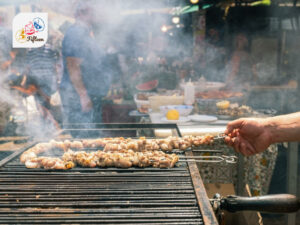
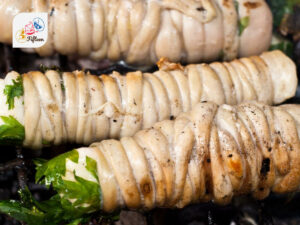
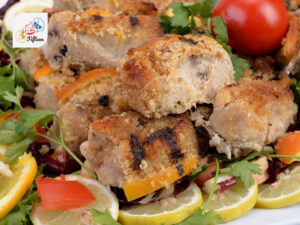
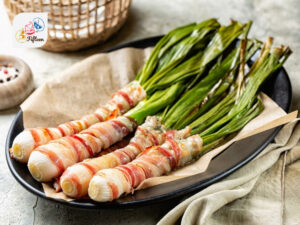



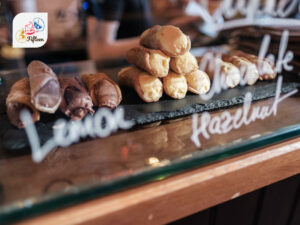

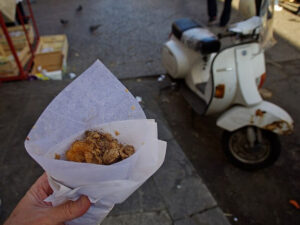
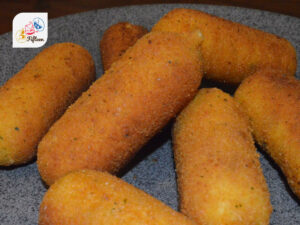
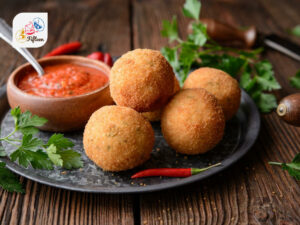
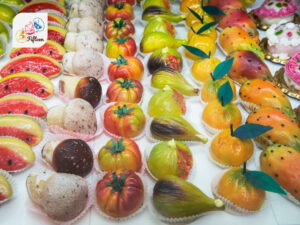
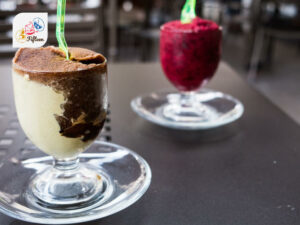


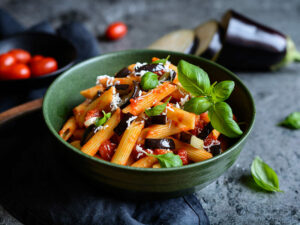
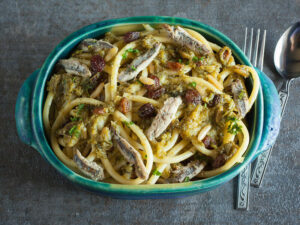
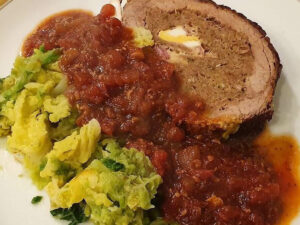
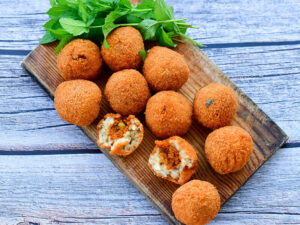
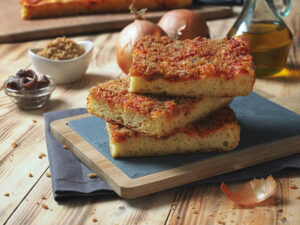
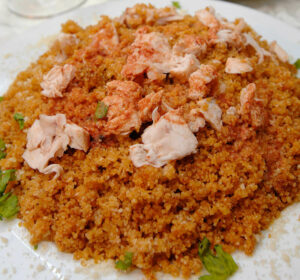
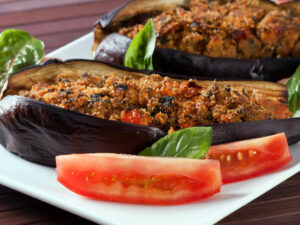
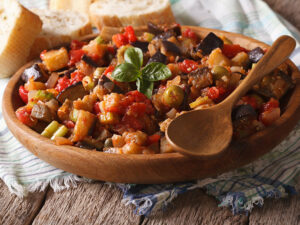
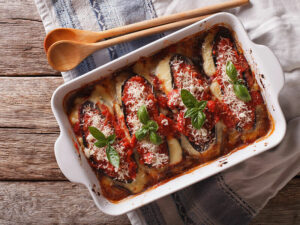
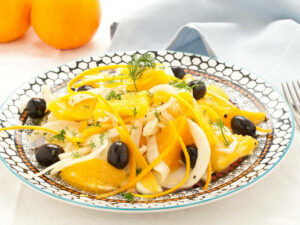
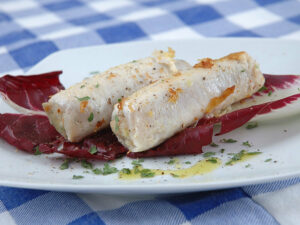




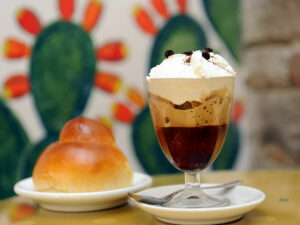
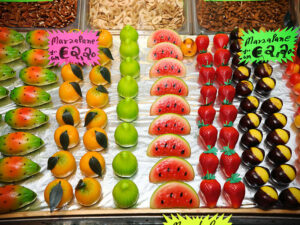

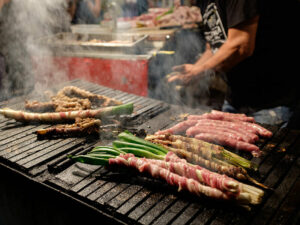
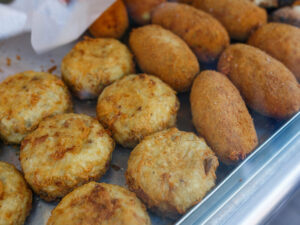
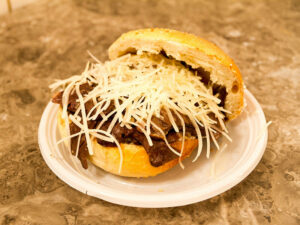
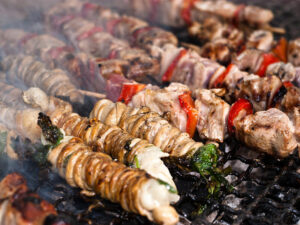
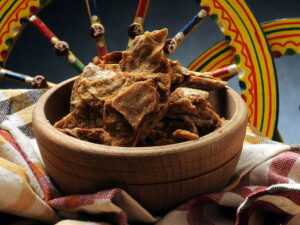
Jamie Scott
Editor in Chief, Senior Content Writer
Expertise
Home Cooking, Meal Planning, Recipe Development, Baking and Pastry, Food Editor, Cooking-video Maker, Western Food Evaluation Expert
Education
Le Cordon Bleu College of Culinary Arts
Local Community College, New York, NY
Jamie Scott is a skilled culinary expert and content creator specializing in Western cuisine. With over 15 years in the culinary field and formal training from Le Cordon Bleu, Paris, Jamie deeply understands how to blend nutrition with delicious flavors. His passion for cooking matches his commitment to making healthy eating accessible and enjoyable.
On Fifteen.net, Jamie brings a fresh perspective to classic dishes and beverages, offering readers insightful recipes, cooking tips, and a fresh view on meal planning that emphasizes taste, health, and simplicity.